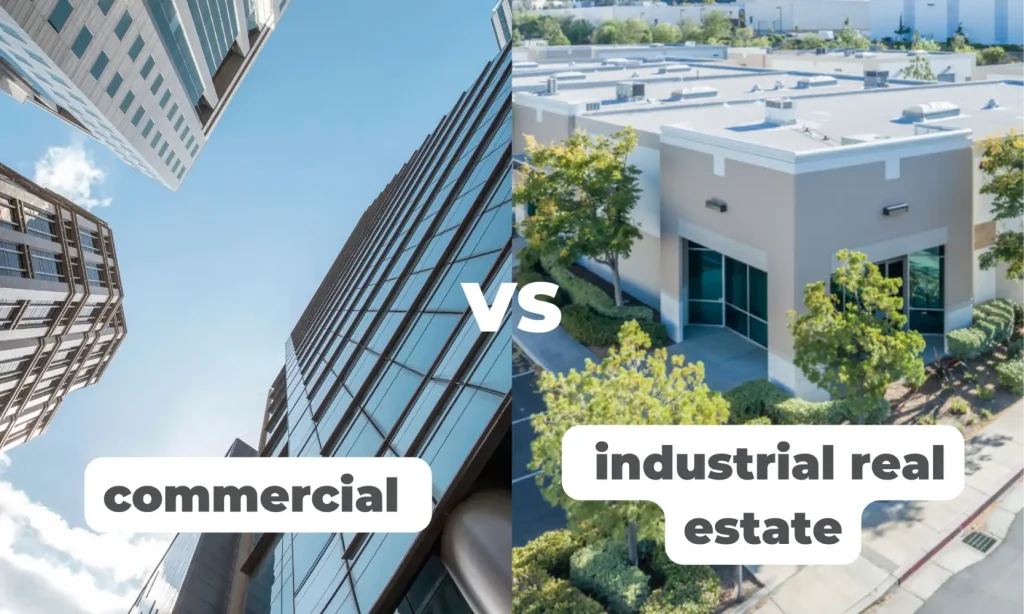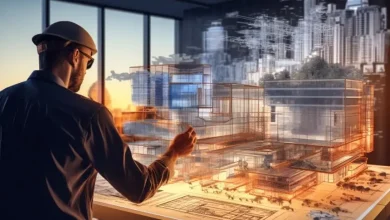Fortifying Spaces: Commercial and Industrial Construction Innovations

The construction industry is experiencing an unprecedented transformation fueled by technological advancements, evolving client demands, and the need for sustainability. Both commercial and industrial construction sectors are at the forefront of this evolution, embracing innovative approaches that enhance safety, efficiency, and durability while meeting modern business requirements. In this article, we’ll explore the cutting-edge innovations reshaping commercial and industrial construction, highlighting how they are fortifying spaces for the future.
Prefabrication and Modular Construction
One of the most impactful trends in both commercial and industrial construction is the rise of prefabrication and modular construction. These methods involve manufacturing building components off-site and assembling them at the construction site, saving time and reducing waste.
- Commercial Construction: Retail stores, office buildings, and healthcare facilities are increasingly adopting modular construction for faster project delivery and cost savings. For instance, prefabricated hotel rooms and office pods can be installed in a fraction of the time required for traditional construction.
- Industrial Construction: Industrial projects benefit significantly from prefabrication, especially for constructing pipelines, refineries, and power plants. Pre-assembled components ensure precision and reduce the risks associated with on-site assembly.
Related Link: Commercial vs. Industrial Construction: Key Differences Explained
Smart Building Technology
The integration of smart building systems is revolutionizing how commercial and industrial spaces operate. These technologies use IoT (Internet of Things) devices, sensors, and automated systems to enhance energy efficiency, security, and operational performance.
- Commercial Applications: In commercial buildings, smart technology enables automated lighting, HVAC systems, and energy management. Smart offices use occupancy sensors to adjust lighting and temperature, reducing energy consumption and improving employee comfort.
- Industrial Applications: Industrial facilities leverage IoT devices to monitor machinery, track inventory, and optimize workflows. Predictive maintenance systems analyze equipment data to identify potential failures before they occur, reducing downtime and repair costs.

Sustainable Construction Practices
Sustainability is no longer optional; it’s a necessity for both commercial and industrial projects. Green construction techniques focus on reducing environmental impact through energy-efficient designs, renewable materials, and waste reduction strategies.
- Commercial Sector: Many commercial buildings now feature green roofs, solar panels, and energy-efficient facades. LEED (Leadership in Energy and Environmental Design) certifications are becoming a standard for sustainable office and retail spaces.
- Industrial Sector: Industrial facilities are incorporating renewable energy sources, such as wind and solar power, into their operations. Additionally, sustainable construction materials like recycled steel and low-carbon concrete are gaining popularity for building warehouses and factories.
Advanced Construction Materials
Innovations in construction materials are fortifying spaces by enhancing durability, safety, and efficiency.
- Self-Healing Concrete: This revolutionary material automatically repairs cracks, extending the lifespan of structures and reducing maintenance costs.
- Commercial Use: Self-healing concrete is being used in commercial buildings to minimize structural damage and ensure long-term durability, particularly in high-traffic areas.
- Industrial Use: In industrial construction, where heavy machinery and chemical exposure can degrade materials, self-healing concrete ensures enhanced resilience and safety.
- 3D-Printed Materials: 3D printing technology is creating custom construction components with precision, reducing material waste and speeding up project timelines.
Robotics and Automation
Automation and robotics are redefining how construction tasks are performed, improving safety and efficiency.
- Commercial Sector: Automated systems are being used for repetitive tasks such as bricklaying and painting in commercial projects. Robotics reduce human error, accelerate project timelines, and enhance worker safety.
- Industrial Sector: Industrial construction sites utilize drones for surveying, robotic arms for assembling components, and autonomous vehicles for transporting materials. These innovations streamline processes and minimize risks in hazardous environments.
Enhanced Safety Measures
Safety is paramount in construction, especially in industrial projects that involve heavy machinery and hazardous materials. Innovations like wearable technology, augmented reality (AR), and AI-powered safety systems are transforming how risks are managed.
- Wearables: Smart helmets and vests equipped with sensors monitor workers’ vital signs and alert them to potential hazards.
- AR Applications: Augmented reality enables workers to visualize construction plans and detect potential risks before they occur, enhancing accuracy and safety.
Building Information Modeling (BIM)
BIM technology is a game-changer for both commercial and industrial construction, allowing teams to create detailed 3D models of projects before construction begins.
- Commercial Sector: BIM helps architects and contractors optimize layouts, ensuring that retail spaces, office buildings, and hotels are functional and cost-effective.
- Industrial Sector: In industrial projects, BIM is used to simulate workflows, plan equipment placement, and ensure compliance with safety and regulatory standards.
The Role of AI and Data Analytics
Artificial intelligence (AI) and data analytics are providing valuable insights into construction processes, improving decision-making and efficiency.
- Predictive Analytics: AI-powered tools analyze data from past projects to forecast potential challenges, optimize resource allocation, and reduce costs.
- Commercial Sector: In commercial construction, AI is used to analyze customer behavior and design spaces that enhance user experiences, such as malls and entertainment venues.
- Industrial Sector: For industrial projects, AI helps monitor equipment performance and optimize manufacturing processes, reducing downtime and increasing productivity.
Conclusion
The commercial and industrial construction sectors are being revolutionized by innovative technologies and practices that prioritize efficiency, sustainability, and safety. From smart building systems and advanced materials to robotics and AI-driven analytics, these innovations are fortifying spaces for the demands of the future.
As these trends continue to evolve, businesses and stakeholders must stay ahead of the curve to leverage these advancements and build spaces that not only meet but exceed the expectations of modern society. Whether it’s creating customer-centric commercial spaces or robust industrial facilities, the future of construction is undoubtedly bright and full of transformative potential.
FAQs :
1. What are the latest innovations in commercial and industrial construction?
Recent innovations include:
- Modular construction: Pre-fabricated building components that reduce time and costs.
- Green building materials: Eco-friendly and sustainable options like recycled steel and low-emission concrete.
- Smart buildings: Integration of IoT (Internet of Things) for energy efficiency and automation.
- 3D printing: Creating construction components faster and with greater precision.
2. How are virtual reality (VR) and augmented reality (AR) used in construction?
- VR: Enables immersive walkthroughs of building designs before construction begins.
- AR: Helps overlay digital models onto physical spaces for better accuracy during construction.
3. How can businesses stay updated on construction innovations?
- Attend industry conferences and trade shows.
- Subscribe to construction technology publications.
- Partner with innovative construction firms.
- Invest in R&D for tailored solutions.
4. What is the role of AI in commercial and industrial construction?
AI helps by:
- Analyzing large datasets to optimize designs.
- Predicting project timelines and budgets.
- Monitoring equipment health to prevent breakdowns.
- Enhancing worker safety through hazard detection systems.



